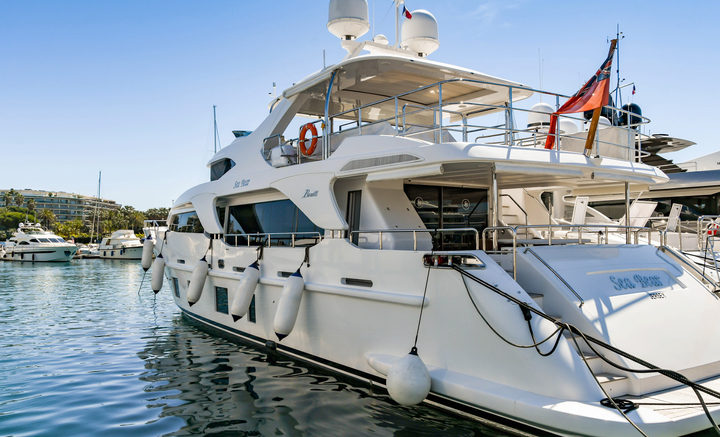Simple rule of thumb. If you’re more than 2 miles from a cell tower, you won’t get service. We don’t think about that very much, because most of us are always within two miles of a cell tower. We’re usually within half a mile of several of them. Cell towers can be found on light poles, rooftops, and hanging off the side of buildings. They’re everywhere, and that’s the way we like it.
On the other hand, it’s possible to get cell service five miles offshore. Some folks even report you can do it ten miles offshore. That’s pushing it a bit, but I’d say with the proper cell phone signal booster, it’s not impossible. Beyond that, though, if you want to communicate you’ll need satellite internet. But that’s a topic for another article.
One simple reason: no obstructions
If you’re near a marina, there’s probably a cell tower there. And that cell tower, at least part of it, faces out toward the water. When you’re five miles out you might not see that tower, but it’s there. More importantly, your phone can see it pretty darn well. On land, there are trees, buildings, hills, plenty of stuff that might block the signal. On the water, there’s none of that, just open water. Isn’t that why you go out there? You like it, and the funny thing is, your phone does too.
Without all the things that block signals, they travel further. There’s no magic to that, it just works. And that’s the simple reason why you’ll get better cell reception on deck than you do on land. Now, you might get worse reception below decks, but a cell phone signal booster can solve that. I’ll explain more about that in a minute but first…
But hey, don’t radio waves pass through buildings?
Yes, they do. It’s a known fact that radio waves, whether used for TV, cellular, or AM/FM radio, do pass through solid objects much more than light does. However, that doesn’t mean they pass through “unharmed.” Typically, and this is a real gross generalization, a signal loses half its strength as it passes through a wall or roof. It can get scattered by leaves, too. Even hot or windy days can contribute to the problem. What’s more, it all adds up. If that signal needs to pass through five trees and three walls before it gets to your phone, it’s going to be pretty weak. It’s really amazing how weak a signal can be and still work great. But there is a limit. We call that limit “the noise floor.”
The noise floor is the level where a device like a TV, radio, or cell phone, can’t distiguish the signal from the noise that’s all around us. RF noise is produced by man-made objects, and it’s also just, kinda, there. If a signal gets so weak that the noise around it overpowers it, no amount of amplification is going to help. And that’s when you get “No Service,” perhaps the most dreaded two words in the English language.
There’s something you can do
Well, most of the time.
If you’re at the point where there’s truly “No Signal,” if that signal is below the noise floor, there’s no amount of tech that will bring it back. But, if you can get even one measly bar, even by climbing up high, you’re in luck. Cell phone signal boosters can take that weak signal and amplify it. Then they can pump it out in the cabin, below decks, or anywhere you need it. It’s proven technology and it works.
When you’re ready to talk about cell phone signal boosters and how they can help you get cell service even further offshore, call us! We’re here for you at 888-233-7563 during East Coast business hours. If it’s after hours, fill out the form below! We’ll get back to you, usually within one business day.




